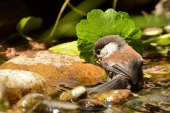


The Humble Soapnut - A Guide to the Laundry Detergent that Grows on Trees ebook by Kathryn Ossing
will be released to subscribers in:
soon!



 2
2




“The beautiful thing about learning is that nobody can take it away from you.” – B.B. King
 4
4




 3
3




My tree nursery: https://mountaintimefarm.com/
 1
1




Abe Coley wrote:chokecherries grow great around pines





 1
1








Burl Smith wrote:
Hmm... I wonder if the seeds remained in them when they were dried and pulverized as an ingredient in pemmican:
My tree nursery: https://mountaintimefarm.com/




Janet Reed wrote:Specifically what variety of pine?
“The beautiful thing about learning is that nobody can take it away from you.” – B.B. King




Abe Coley wrote:chokecherries grow great around pines
“The beautiful thing about learning is that nobody can take it away from you.” – B.B. King




Jeff Hodgins wrote:On my farm we have a gully filled with big evergreens they call Ocote with long needles. It grows edible mushrooms in the ground and since the ponds are in the same area the mushrooms have started to grow more and later in the fall. Needles also good for mixing with cement or bricks.
“The beautiful thing about learning is that nobody can take it away from you.” – B.B. King
 2
2




Once you make a decision, the universe conspires to make it happen. - Ralph Waldo Emerson




Jackie Frobese wrote:This is a youtube video I happen to watch not long ago about making baskets from pine needles...
“The beautiful thing about learning is that nobody can take it away from you.” – B.B. King




Andrea Locke wrote:You can make pine needle tea and salves and the pollen is also edible.
“The beautiful thing about learning is that nobody can take it away from you.” – B.B. King
 3
3




This is all just my opinion based on a flawed memory

 1
1




Ben Zumeta wrote:Shore pine would be helping with salt effects in the air if they are planted as a wind break from the ocean. Pines' allelopathy (deterrence of many other plants) largely comes from root exudates, and their needles and bark are not actually very acidic (6.2pH if I remember correctly). The needles make excellent mulch and bird bedding. In this part of NW CA, they seem to correlate with hedgehog and chanterelle mushrooms. Understory edibles that seem to mutually benefit from shore pines are evergreen and red huckleberries, salal, thimbleberry, wild raspberries and blackberries, hazel and tanoak. They also host many animal species (more than one might think). As evergreens, they are far more effective than deciduous trees at slowing and spreading rainfall that comes predominately in the winter in our climate. As they grow equally fast in our mild winters they pump sugars into the soil to support biota in the ground (like mushrooms) through the period when deciduous trees are dormant.
“The beautiful thing about learning is that nobody can take it away from you.” – B.B. King




SKIP books, get 'em while they're hot!!! Skills to Inherit Property
 3
3




In modern times the only right way forward is to come back to nature.
 4
4




Melonie Corder wrote:
I'd love to utilize the Pine for something as they die off, drop limbs and shed branches.
"Study books and observe nature; if they do not agree, throw away the books." ~ William A. Albrecht




The only thing...more expensive than education is ignorance.~Ben Franklin
 5
5








James Freyr wrote:
Melonie Corder wrote:
I'd love to utilize the Pine for something as they die off, drop limbs and shed branches.
One beautiful way to utilize what appears to be a dead pine, or any tree, is to leave it standing. A dead tree is far from dead, and is instead teeming with life. It is the second half of a trees life.
“The beautiful thing about learning is that nobody can take it away from you.” – B.B. King
 1
1








Abe Coley wrote:
Burl Smith wrote:
Hmm... I wonder if the seeds remained in them when they were dried and pulverized as an ingredient in pemmican:
no the seeds are poisonous



|
Doody calls. I would really rather that it didn't. Comfort me wise and sterile tiny ad:
the permaculture bootcamp in winter (plus half-assed holidays)
https://permies.com/t/149839/permaculture-projects/permaculture-bootcamp-winter-assed-holidays
|


